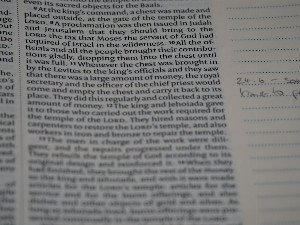Antonio Pinna
La Vergine Orante di Santa Maria di Tergu
Introduction
La vergine orante di santa maria di tergu. Analisi storico-artistica della Vergine Orante di Santa Maria di Tergu, Sardegna. Scultura bizantina in vulcanite rossa e influssi pisani e benedettini.
Abstract
All’interno della chiesa di Santa Maria di Tergu (SS), nel territorio dell’Anglona, in Sardegna è custodito il simulacro litico della Vergine Orante. Scolpito nella vulcanite rossa, il manufatto è derivato da un modello iconografico bizantino. Il lavoro svolto, in un’analisi storico artistica, propone di inserire la scultura della Vergine Orante di Santa Maria di Tergu, in quel clima di influssi artistici giunti in Sardegna, in particolar modo in questo caso nel Giudicato di Torres, con l’affermarsi dei gusti pisani e benedettini, capaci di guardare con grande interesse le tipologie iconografiche bizantine, per svincolarle dalle forme classiche orientali e arricchirle di una nuova libertà comunicativa. [ultima revisione Dicembre 2021]
Review
The paper, "La Vergine Orante di Santa Maria di Tergu," presents a focused historical and artistic analysis of a significant lithic sculpture housed within the church of Santa Maria di Tergu in Sardinia. The core argument centers on the sculpture's derivation from a Byzantine iconographic model, subsequently reinterpreted within the complex artistic milieu of the Giudicato di Torres. This study promises a valuable contribution to understanding the intricate interplay of cultural and artistic influences in medieval Sardinia. The abstract clearly outlines a rigorous historico-artistic methodology applied to a specific artifact: the "Vergine Orante" sculpted from red volcanic rock. The proposed framework, linking Byzantine iconography with the aesthetic preferences of Pisan and Benedictine tastes prevalent in the Giudicato di Torres, is particularly compelling. It suggests a nuanced process of cultural assimilation and adaptation, where established Eastern forms were consciously detached from their classical Oriental origins and imbued with a "new communicative freedom" under Western patronage. This regional focus, examining a specific piece within its localized historical and political context, is a significant strength. While the abstract lays a strong foundation, the full paper would ideally expand on the specific visual evidence supporting the "new communicative freedom" and how Pisan and Benedictine patrons explicitly facilitated this transformation from classical Eastern forms. A detailed stylistic comparison with contemporary Pisan, Benedictine, and other relevant Sardinian or Byzantine works would undoubtedly bolster this central claim. Nonetheless, this research offers an important insight into the active role of local patrons and artists in reinterpreting major artistic currents, highlighting Sardinia's dynamic position as a crossroads of medieval Mediterranean art. It is a well-defined and potentially impactful study for scholars of medieval Italian and Byzantine art history.
Full Text
You need to be logged in to view the full text and Download file of this article - La Vergine Orante di Santa Maria di Tergu from ArcheoArte .
Login to View Full Text And DownloadComments
You need to be logged in to post a comment.
Top Blogs by Rating
Identical Twins Aren't Identic...
By Sciaria
Unlocking Life's Source Code:...
By Sciaria
Are You Just a Colony? The Int...
By Sciaria
Favorite Blog
Beyond the Chart: The Nurse's...
By Sciaria
Beyond the Stereotype: Unpacki...
By Sciaria
The Evolution of Knowledge in...
By Sciaria
Related Research
Antonio gargano, con aprendido canto. tradiciones poéticas y perspectivas ideológicas en el cancionero amoroso de garcilaso de la vega
Mystik blir vetenskap
Factors of diabetic retinopathy among type 2 diabetes mellitus patients in central java province, indonesia
Share
Notice Board
- FAMILY AS THE PLACE FOR NATIONAL DISCRIMINATION: AN ANALYSIS OF BEATRICE SPERAZ’S AUTOBIOGRAPHY
- THE IMPLEMENTATION OF ARTIFICIAL INTELLIGENCE IN THE ESTABLISHMENT OF ISLAMIC LAW: OPPORTUNITIES AND CHALLENGES
- DESCRIPTIVE ANALYSIS OF DIABETIC RETINOPATHY IN CENTRAL JAVA PROVINCE (CASE STUDY AT RSUP DR. KARIADI)





